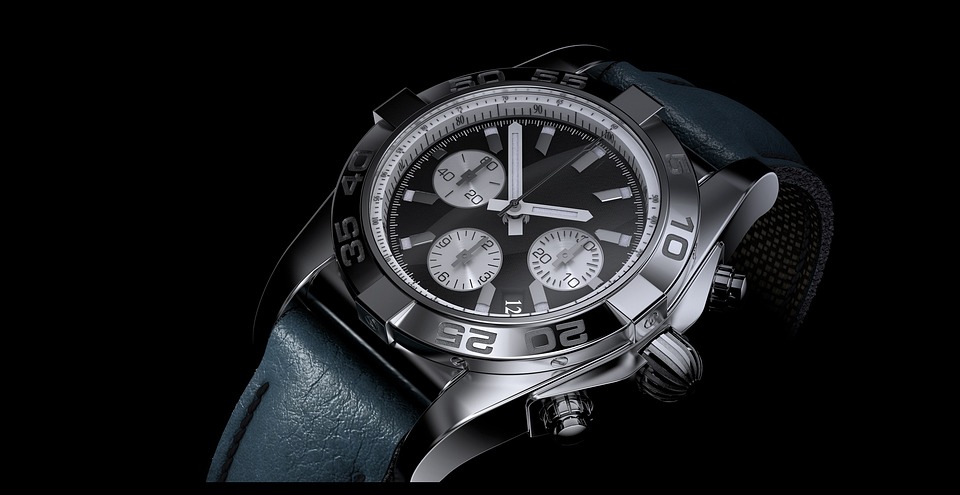Wrist watches are a timeless accessory that has been a part of fashion since its inception. The evolution of wrist watches has seen the emergence of some of the most popular fashion icons to date. Many fashion enthusiasts would agree that wrist watches have revolutionized fashion in a way that we could never imagine.
Wrist watches have come a long way from their humble beginnings in the 19th century. Initially, pocket watches were popular among the elite, and it was not until the early 20th century that wrist watches became a popular accessory. The transition of wrist watches from men’s to women’s fashion started in the early 1920s, and ever since then, wrist watches have remained an important accessory for both genders.
One of the most significant impacts of wrist watches on fashion was the introduction of the quartz movement in the 1970s. This new technology enabled wrist watches to be produced at a much lower cost, making them more affordable to the general public. Furthermore, the quartz movement also opened up new design possibilities, leading to the creation of some of the most iconic wrist watches we know today.
Besides being a status symbol, wrist watches have also been used to commemorate special occasions. Many luxury brands often release limited edition watches to celebrate various events. Examples include Rolex, which released a limited edition GMT-Master II for the 50th anniversary of the watch in 2005, or the Patek Philippe Nautilus to celebrate its 40th anniversary.
Wrist watches have also been a source of inspiration for many designers, resulting in the creation of various watch-inspired designs. The Moka watch-shaped coffee maker by Alessi and the IKEPOD merchandise teaming up with Marc Newson to create an Ikepod Hour Glass are some of the notable examples. Even in the world of cinema, wrist watches have been an integral part of the story, like in the James Bond series, where wrist watches have been used as spy gadgets.
Finally, the popularity of smartwatches that blend fashion and technology is a testament to the continued evolution of this fashion accessory. Brands like Apple, Samsung, and Fitbit have made significant progress in designing smartwatches that are not only functional but also fashionable. The era of smartwatches may have pushed the traditional wrist watches a step behind, but they have opened up a vast world of new possibilities for the future of wrist watches, where fashion meets technology.
The Early History of Wrist Watches
Wrist watches first emerged in the late 19th century as a practical solution for soldiers in the field. Prior to this, watches were primarily pocket-sized and worn by men. However, wrist watches gained popularity during World War I as they were more convenient and allowed soldiers to quickly check the time without having to reach into their pockets.
By the 1920s, wrist watches had become more popular for civilian use and were marketed as fashionable accessories for both men and women. This popularization of wrist watches sparked a new industry in watchmaking and opened the door for experimentation and innovation in design.
The Evolution of Wrist Watch Design
Over the years, wrist watch design has evolved to reflect changing fashion trends and technological advancements. In the 1940s and 1950s, rectangular and oval-shaped watches were popular, while the 1960s and 1970s saw the emergence of chunky, sporty watches. In the 1980s and 1990s, metal and leather bands became popular, while the turn of the millennium saw the rise of smart watches and technology-driven designs.
Throughout this evolution, wrist watches have remained a staple accessory in fashion, with luxury and designer watch brands becoming coveted status symbols among consumers.
The Role of Wrist Watches in Fashion
Wrist watches have played a significant role in fashion since their inception. From being practical accessories for soldiers to becoming statement pieces for the fashion-conscious, wrist watches have been both functional and fashionable. They have long been paired with formal wear, adding a touch of sophistication and elegance to any outfit. In recent years, however, watches have also become a more casual accessory, often paired with casual wear for a trendy, effortless look.
Iconic Watches and Their Influence on Fashion
Throughout history, certain watches have become iconic and have had a significant influence on the fashion industry. For example, the Cartier Tank watch, first introduced in 1917, is a classic example of a luxury watch that has become a coveted status symbol. Other watches, such as the Rolex Submariner, have been popularized by famous individuals like James Bond, cementing their place in pop culture and driving demand for similar designs.
The Future of Wrist Watch Design and Fashion
As technology continues to advance, it is likely that wrist watch designs will continue to evolve to incorporate new features and capabilities. The rise of smart watches in recent years has already paved the way for watches that can do more than simply tell time. Additionally, sustainability and ethical manufacturing are becoming increasingly important issues in fashion, meaning that watch brands will need to take these factors into consideration in their designs and production processes.
The Bottom Line
Wrist watches have a rich history and have had a significant impact on fashion over the years. From their practical beginnings to their current status as fashion accessories, wrist watches have remained a timeless and coveted accessory for both men and women. As time goes on, it will be interesting to see how new technology and changing fashion trends will continue to shape the future of wrist watch design.
Summary
Wrist watches have been an integral part of fashion, evolving from their humble beginnings in the 19th century to become popular accessories today for both genders. The introduction of the quartz movement in the 1970s revolutionized wrist watch design and made them more affordable for the general public, leading to the creation of iconic watches. Wrist watches have also been used to commemorate special occasions, inspire designers, and have been featured in cinema. The popularity of smartwatches has blended fashion and technology, opening up a world of new possibilities for the future of wrist watches.

FAQ
When did wristwatches become popular?
Wristwatches became popular in the early 20th century. Prior to that, pocket watches were more common. During World War I, wristwatches became essential for soldiers because they were more practical than pocket watches. After the war, wristwatches became a status symbol and a fashion accessory, especially for women. The availability of cheaper mass-produced watches in the 1920s and 1930s further popularized wristwatches.
What impact did wristwatches have on fashion?
Wristwatches revolutionized fashion, becoming a statement accessory and a symbol of status and style. They changed the way people dressed, as watches became an essential element of an outfit. Many people saw wristwatches as a reflection of their personality and taste, and therefore bought watches that suited their aesthetic preferences. Wristwatches paved the way for watch design to become an art form, with many brands offering timepieces that are not only functional but also visually stunning.
What were some notable moments in the history of wristwatches?
One of the most notable moments in the history of wristwatches was the introduction of the quartz watch in the 1960s, which revolutionized the industry by offering more accurate timekeeping. The 1970s saw the rise of luxury sports watches, such as the Rolex Submariner and the Omega Seamaster, which became popular with divers and other adventure seekers. The 1980s saw the emergence of the digital watch, which offered new features like alarms, timers, and stopwatch functions. The 21st century has seen the emergence of smartwatches, which enable users to stay connected and access a range of features beyond timekeeping.
What are some iconic wristwatches and why are they significant?
There are many iconic wristwatches, but some of the most significant include the Rolex Daytona, the Omega Speedmaster, and the Cartier Tank. The Rolex Daytona gained fame as the watch of choice for race car drivers and Hollywood celebrities, while the Omega Speedmaster became famous as the watch worn by NASA astronauts during the first moon landing. The Cartier Tank, on the other hand, is an iconic watch that became a symbol of elegance and sophistication. These watches are significant because they are associated with significant historical and cultural moments and represent the evolution of watch design and functionality.




